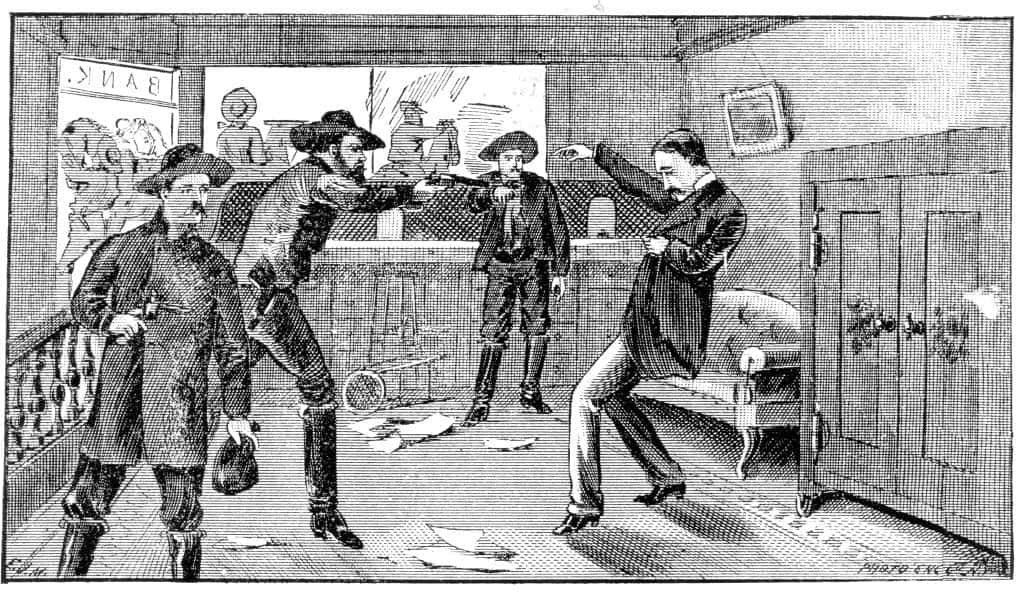Bank robbery is a federal crime in the United States, and the Federal Bureau of Investigation defines the act of robbery as taking or attempting to take property through the use of, or the implied use of force. This makes the act of tunneling into a bank, or other unlawful entry such as forcing the locks, technically a burglary rather than a robbery, but in the public imagination they are one and the same thing for the most part. Bank robberies are a major plot device in films, particularly the once-popular western genre, though in reality bank robberies in the American western frontier days were relatively rare. Train and stagecoach robberies were more common since they could be carried out in remote locations, without having to contend with the inconvenience of local law enforcement.
Bank robbers became part of American folklore in many cases, among them being the James brothers, Butch Cassidy and the Hole in the Wall Gang, the Younger Brothers, and in a later era John Dillinger, Bonnie and Clyde, Willie Sutton, and many others. Before the American Civil War, most thefts from banks were burglaries, among them the taking of over $150,000 from the Bank of Pennsylvania in Philadelphia in 1798, when the thief or thieves entered the bank after hours, leaving no sign of force. Philadelphia authorities suspected the theft to have been an inside job and entry achieved using a key.

Here are some of the most notorious bank robberies or robbers in American history.

1. The St. Albans raid and robbery was claimed by the Confederacy to be an act of war
In early October 1864, former soldiers of the Confederacy who had fled to Canada began to gather in the small town of Saint Albans, Vermont. They were not in uniform and were not connected to any existing command of the Confederate Army, though they were under the ostensible command of Bennett Young, a former member of Morgan’s Raiders who had surrendered with Morgan but escaped to Canada. Young had contacts with Confederate agents in Canada, who authorized the raid on St. Albans, which was actually the simultaneous robbery of the three banks in the town. On October 19 the citizens of the town were held at gunpoint on the town common while the raiders robbed the banks, drove off the town’s horses to discourage pursuit, and fled to Canada.
There was some armed resistance from the citizens of the town, and gunfire was exchanged leading to one townsman being killed and another wounded, with one of the raiders, wounded as well. After the United States government protested to the British authorities the raiders were arrested in Canada and the money seized. The raiders protested that the action had been a legitimate act of war and the Canadian authorities released them but returned the money to Saint Albans. Whether the raid was an act of war or a bank robbery has been debated ever since. The most significant result of the St. Albans raid was the shift of public opinion in Canada regarding support for the Confederacy, with the majority turning against the Confederate activity in Canada, and there were no more raids launched across the northern border.

